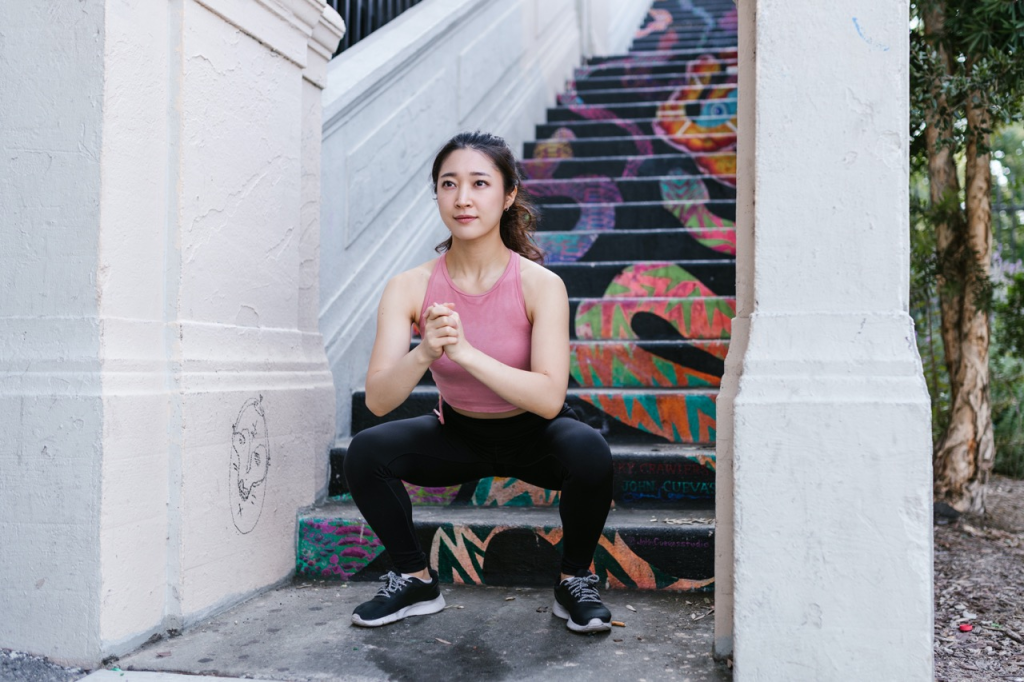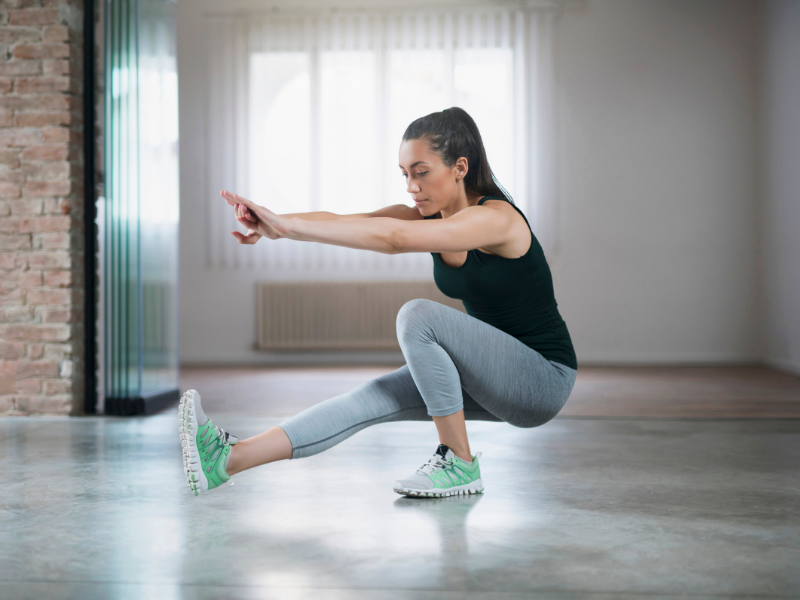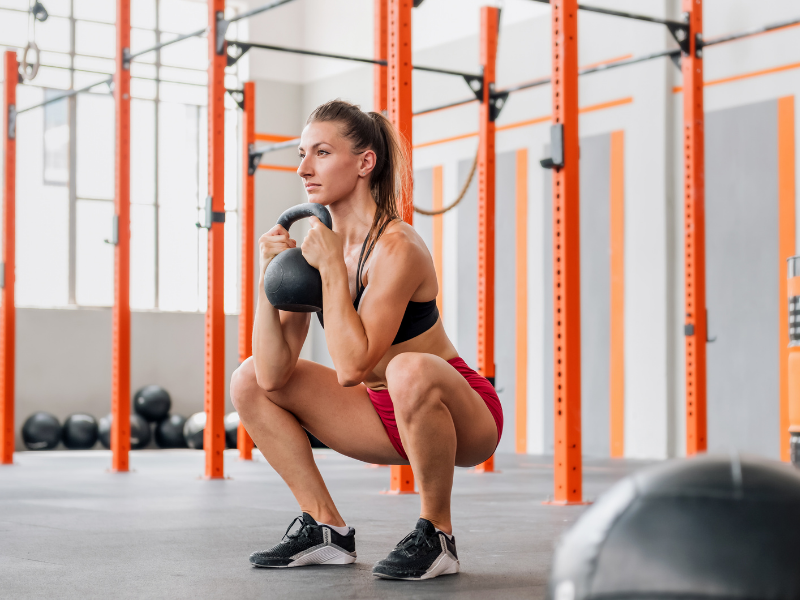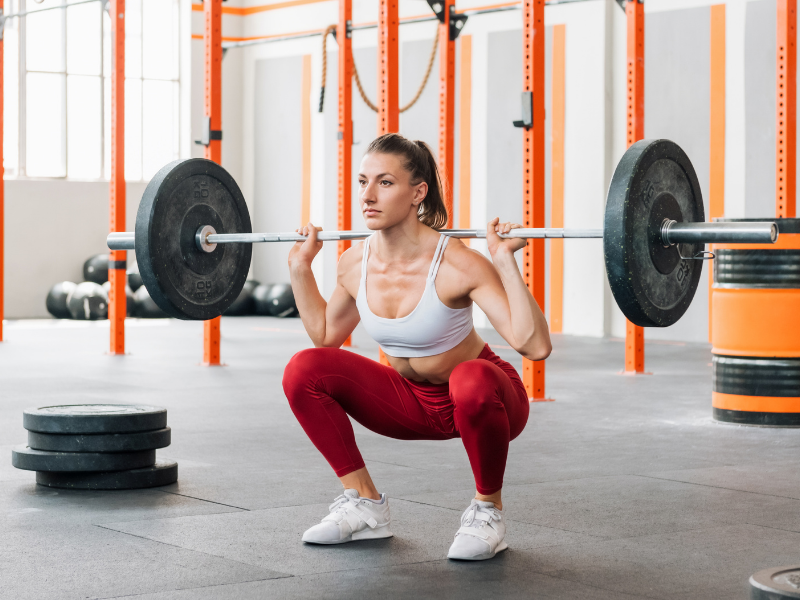


Have you ever heard the term “Asian Squat”? Is it real that only Asians can complete Asian Squats? The answer is certainly no.
Have you ever seen people casually sitting in what appears to be a fully squatting position, knees parallel to the chest? That means you’ve witnessed the “Asian Squat,” a form of deep squat where the feet remain flat on the ground. Just as the name suggests, this position has an intriguing cultural significance, as well as fitness-related health benefits associated with it.
But can only Asians do it? And what’s so special about this seemingly uncomfortable exercise? We discuss these questions and more in this article, so read on to learn about the Asian Squat!
What Is The Asian Squat?
Historical and Cultural Significance
The Asian squat naturally originated in various Asian countries, emerging as a convenient position due to environmental and social factors. It serves as a natural resting position in many Asian countries, emphasizing its comfort and practicality.
For example, farmers working in agricultural fields could not bring furniture to rest, so squatting became a common practice. This deep-squatting position was also adopted for chatting, eating when chairs were unavailable, buying and selling in marketplaces, and playing traditional games [1].
However, the most prevalent use of the Asian squat is associated with Asian toilets, which require this position for proper use.
How To Do The Standard Asian Squat

- You must begin with your feet being shoulder-width apart or slightly wider
- Then initiate the squat by lowering your body and bending your hips and knees. Keep your chest and back straight. Position your feet at shoulder width or slightly wider.
- The heels of your feet must be flat on the ground. You can keep your hands together in front of your chest, or simply let them hang.
- Keep your posture straight and maintain the position for at least a minute.
Do note that this exercise can be uncomfortable for pregnant women or anyone with hip, ankle, knee, or bone issues, especially if you’re not used to doing it as it places some pressure on the joints. Kindly consult your doctor before attempting this squatting position.
What Are The Health Benefits Of Asian Squat?
Practicing the Asian squat comes with an array of health and mobility benefits:
- The Asian squat engages various muscle groups such as the glutes, quadriceps, hamstrings and the core which strengthens the lower body and facilitates lower body mobility.
- A natural spine alignment forms when in the Asian Squat position, which encourages a straighter and better posture.
- The traditionally practiced position for Asian toilets supports natural and effective bowl movement, and also helps in preventing direct contact with the facility which reduces the chance of infections.
- The weight of our body is evenly distributed to the hips and legs in this deep squat position, which activates the hips and knee joints.
- The Asian squat increases blood flow and circulation in the lower body, which helps in preventing the risk of varicose veins and other circulatory problems.
- Actively engaging in the Asian squat is a good sign of flexibility and mobility and it gets easier to do the deep squat over time with practice.
- Strengthening core muscles is another benefit of the Asian squat, as it requires engaging the core for stability and balance.
- Ankle flexibility is crucial for achieving the correct form during the Asian squat, making it easier to squat properly and reducing the risk of injury.
Integrating the squatting position into a broader fitness routine can enhance overall physical performance and promote well-rounded fitness goals.
Four Alternative Squat Workouts To Try
Basic Squats

- Begin by standing with your feet shoulder-width apart.
- Keep your upper torso upright and start squatting until your thighs are parallel to the floor as if you are going to sit back into a chair.
- Keep your hands folded or stretched out in front of you as you’re doing this.
- Rise slowly and repeat.
This basic squat is also known as a flat footed squat, which helps improve flexibility and mobility by keeping the heels flat on the ground.
Single Leg Squats

- Assume your position by standing on one foot with the other leg lifted and stretched out.
- Keep your upper torso upright and start squatting as if you are going to sit back into a chair.
- Keep your arms stretched out in front of you to help with your balance.
- Squat as low as you can and rise slowly. Shift your working legs.
Goblet Squat

- Begin this exercise by standing with your feet shoulder-width apart and your toes pointing slightly outward.
- Now pick up your dumbbell or kettlebell. Hold the weight like you’re holding a goblet, with your hands positioned under the weight and your elbows pointing downwards. Remember to keep the weight close to your chest.
- Ensure your back is straight and engage your core muscles. This not only helps in maintaining proper form but also strengthens your core muscles, aiding in overall fitness and fat burning.
- Squeeze your glutes as you slowly return to a standing position. Repeat the exercise.
Overhead Squat

- This exercise requires a barbell. Pick it up and grip it shoulder-width apart as position it overhead. Your arms must be fully extended and the wrists front-facing.
- The feet should also be positioned shoulder-width apart, and the toes can point slightly outward.
- Engage your core and then begin the squat by pushing your hips back and bending your knees.
- Go as low as you comfortably can or at least until your thighs are parallel to the ground. Do not cave inward.
- Keep the barbell steady overhead and make sure it’s in line with your shoulders and hips.
- End the exercise by standing up straight with the barbell still overhead before putting it back on the rack.
Why Can’t Some People Do Asian Squats?
It is often joked that most Westerners cannot perform the Asian squat, but how accurate is this? Many Westerners do indeed struggle with this position, and several factors contribute to this difficulty.
In a 2018 interview, Bryan Ausinheiler, a physical therapist from California, explained that shorter limbs can support better balance—a conclusion he reached through his research and experiments. Body shape, such as limb length and torso proportions, significantly influences an individual’s ability to perform the Asian squat.
Additionally, research suggests that with age and a lack of practice, the ability to perform the Asian squat can diminish. Europeans and Americans are generally not accustomed to this position, as it is not commonly used in their cultural practices or toilets, unlike in many Asian cultures.

Consequently, people from cultures where the squat is not a regular practice, or where individuals tend to have longer limbs, may find the position uncomfortable.
While this does not mean that western adults cannot perform the squat, it may be more challenging for them compared to Asians, for whom it is a common and practiced habit. Ankle flexibility is also crucial in achieving the correct form during the Asian squat, as individuals with better ankle flexibility find it easier to squat properly.
Other physical factors can also affect the ability to do the Asian squat. For instance, individuals with short hamstrings may find it difficult to keep their heels on the ground. Additionally, being overweight can be a barrier, as indicated by a 2009 study showing that ankle dorsiflexion flexibility and body weight can prevent individuals from achieving deep squatting positions.
Final Thoughts
We hope that this article has given you a comprehensive insight on the the Asian squat. Just like this exercise, there are plenty more workouts that activate the glutes, core, and leg muscles. To learn and practice more such exercises and fitness tips, check out the JustFit app!
What is the Asian squat good for?
What is the difference between Asian squat and Slav squat?
Can everyone learn to Asian squat?
Mastering The Asia Squat: A Guide To Tradition, Benefits, and Practice. Vietnamdrive. (n.d.). Available online: https://www.vietnamdrive.com/asian-squat/
Tatsuya, K. (2009). Ankle joint dorsiflexion measurement using the deep squatting posture. ResearchGate. Available online: https://doi.org/10.1589/jpts.21.195
Wong, S., Ada, L., & Butler, J. (1998). Differences in ankle range of motion between pre-walking and walking infants. The Australian journal of physiotherapy, 44(1), 57–60. Available online: https://doi.org/10.1016/s0004-9514(14)60366-4
Zhang, S. (2021, December 10). Why can’t everyone do the “Asian squat”? The Atlantic. Available online: https://www.theatlantic.com/health/archive/2018/03/can-you-do-the-asian-squat/555716/





